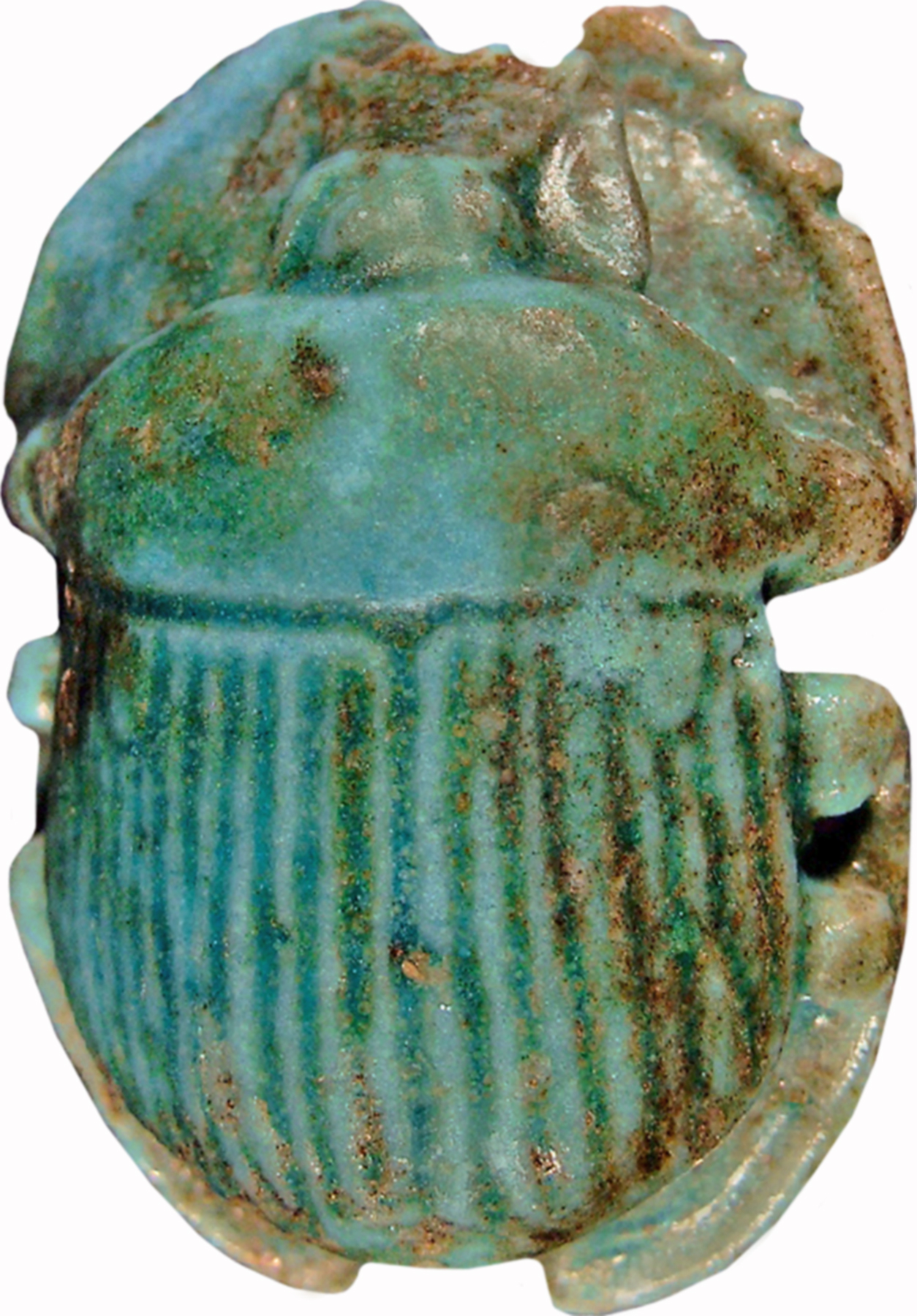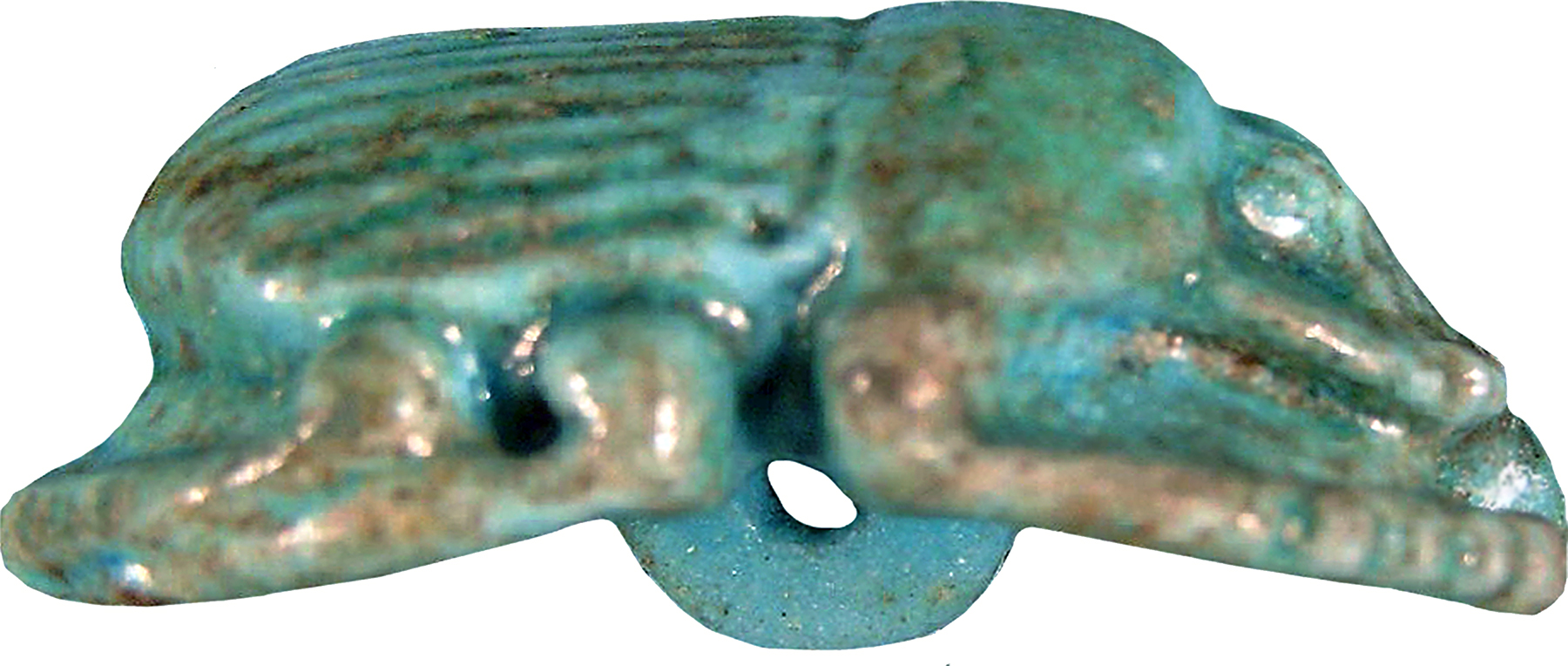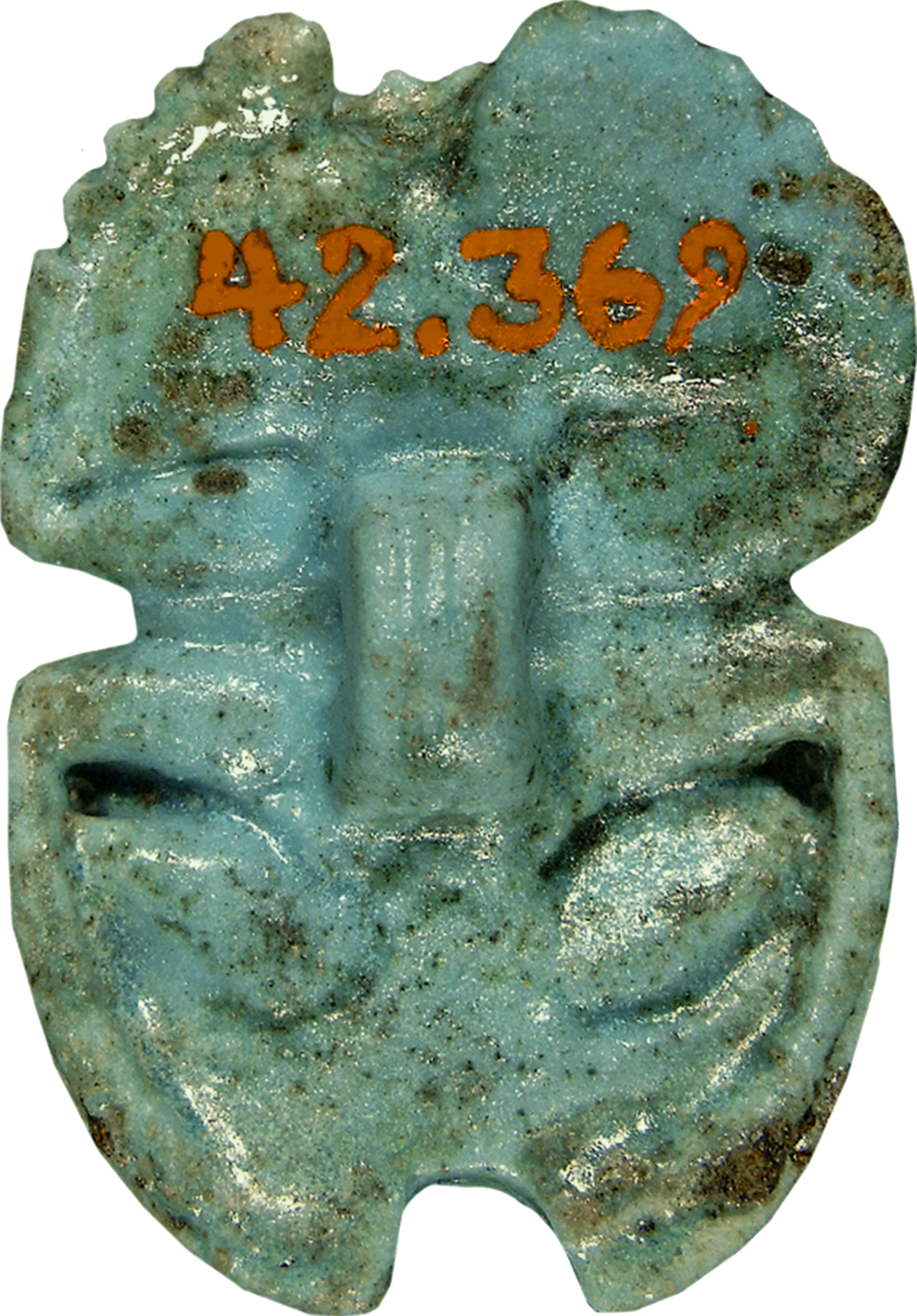Naturalistic Scarab
(Ancient Egypt and Nubia )
Naturalistic scarabs, which exhibit a beetle-formed underside instead of a flat bottom with additional motifs, became popular in the late Third Intermediate and Late periods. They were attached to the mummy bandages and were part of the amulet set. There are two varieties of such scarabs: red carnelian and blue-green faience scarabs. It is likely that the blue-green scarabs focus only on the renewal aspect, while the red carnelian scarabs were related to the sun rise/set aspect and gave special protection at the critical transition phase.
Provenance
Provenance (from the French provenir, 'to come from/forth') is the chronology of the ownership, custody, or location of a historical object. Learn more about provenance at the Walters.
Henry Walters, Baltimore, 1929 [mode of acquisition unknown]; Walters Art Museum, 1931, by bequest.
Geographies
Egypt (Place of Origin)
Measurements
H: 9/16 x W: 7/8 x L: 1 5/16 in. (1.4 x 2.3 x 3.3 cm)
Credit Line
Acquired by Henry Walters, 1929
Location in Museum
Accession Number
In libraries, galleries, museums, and archives, an accession number is a unique identifier assigned to each object in the collection.
In libraries, galleries, museums, and archives, an accession number is a unique identifier assigned to each object in the collection.
42.369






